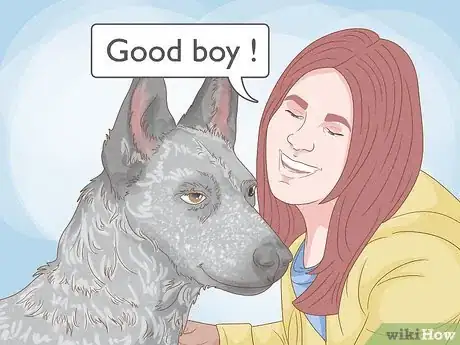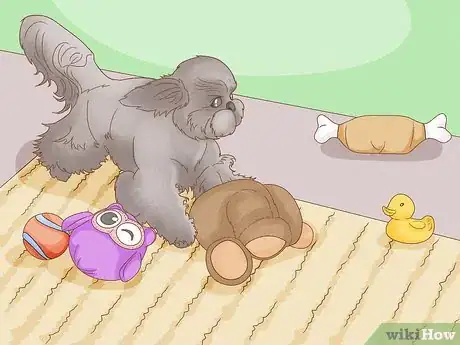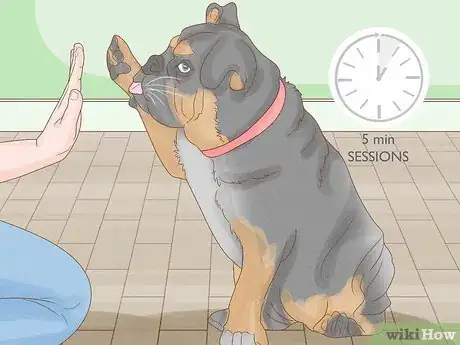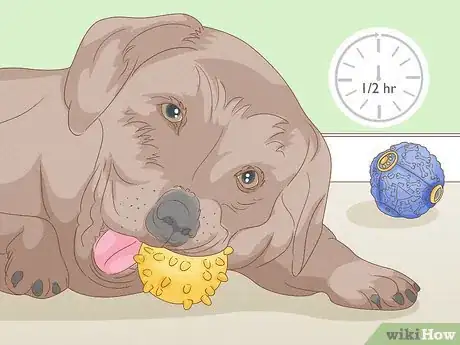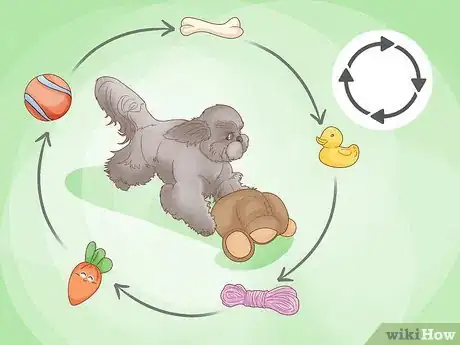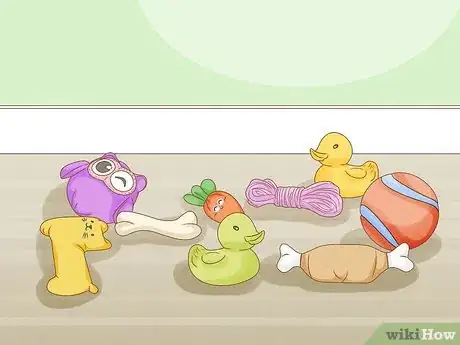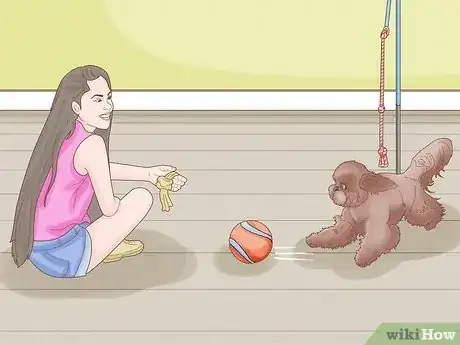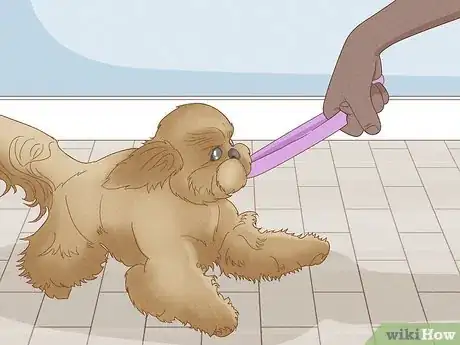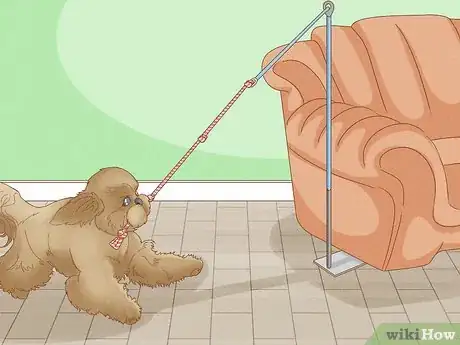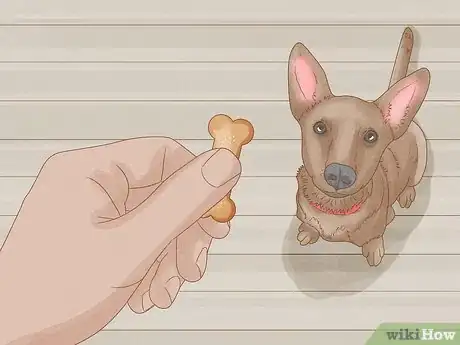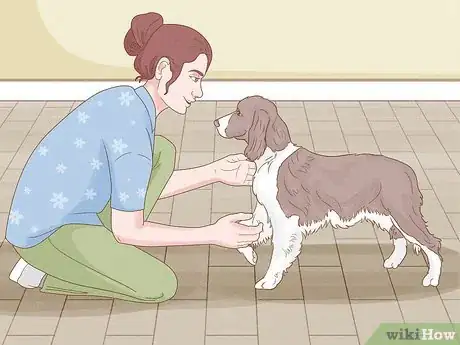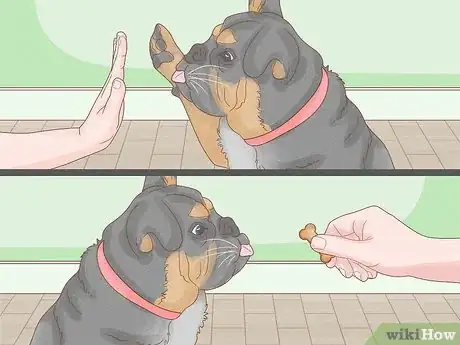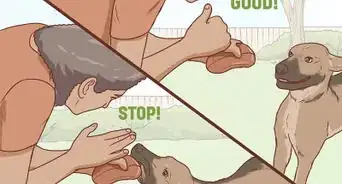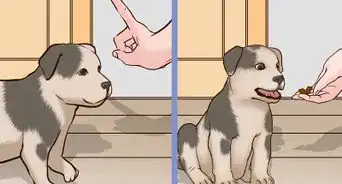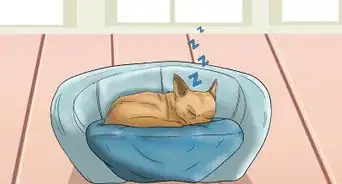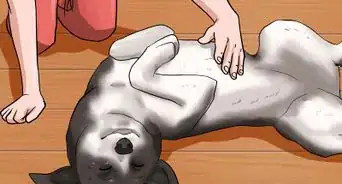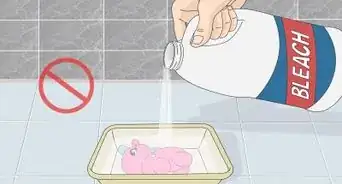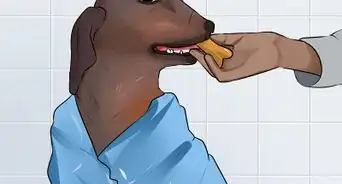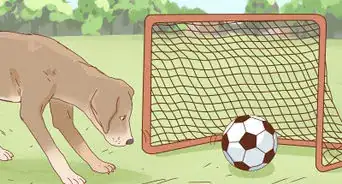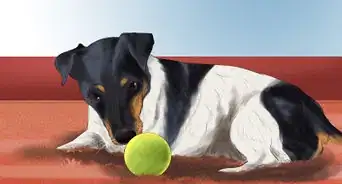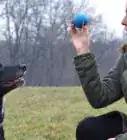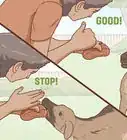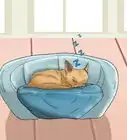This article was co-authored by David Levin and by wikiHow staff writer, Caroline Heiderscheit. David Levin is the Owner of Citizen Hound, a professional dog walking business based in the San Francisco Bay Area. With over 9 years of professional dog walking and training experience, David's business has been voted the "Best Dog Walker SF" by Beast of the Bay for 2019, 2018, and 2017. Citizen Hound has also been ranked #1 Dog Walker by the SF Examiner and A-List in 2017, 2016, 2015. Citizen Hound prides themselves on their customer service, care, skill, and reputation.
There are 11 references cited in this article, which can be found at the bottom of the page.
This article has been viewed 64,715 times.
If you've got a dog at home who just doesn't seem interested in toys and games, it's completely natural for you to want to encourage some playful behavior in them. Play enriches the lives of dogs by stimulating their minds, exercising their bodies, deepening their relationships, and just helping them have a bit of fun, too. Fortunately, there are so many easy and effective ways to get your dog to see just how great play can be! In this article, you'll find tips and tricks to help make your dog more playful.
Steps
Community Q&A
-
QuestionWhat if my dog is very chill and doesn't do anything all day?
 Community AnswerSome dogs are like that, but it's possible you just haven't found the right toy/activity yet. Buy some new toys, take your dog to the dog park to play with other dogs, and give her treats or praise when she does something active. At the very least, make sure she's getting plenty of exercise through daily walks.
Community AnswerSome dogs are like that, but it's possible you just haven't found the right toy/activity yet. Buy some new toys, take your dog to the dog park to play with other dogs, and give her treats or praise when she does something active. At the very least, make sure she's getting plenty of exercise through daily walks. -
QuestionHow can I tell if he is happy or sad?
 Suyasha BelwalCommunity AnswerLook at his movements. If he is wagging his tail or jumping, he is happy, but if he not showing interest in anything, then he is sad.
Suyasha BelwalCommunity AnswerLook at his movements. If he is wagging his tail or jumping, he is happy, but if he not showing interest in anything, then he is sad. -
QuestionWhat if my dog is afraid of other dogs?
 Community AnswerIf your friends have dogs, have them over frequently until they get acquainted enough that your dog is no longer afraid. Do this with multiple dogs of varying breeds and sizes. Once your dog is comfortable with more dogs than one, take it to a dog park. Try a day when there are few to no dogs present, so it can familiarize itself to the smells.
Community AnswerIf your friends have dogs, have them over frequently until they get acquainted enough that your dog is no longer afraid. Do this with multiple dogs of varying breeds and sizes. Once your dog is comfortable with more dogs than one, take it to a dog park. Try a day when there are few to no dogs present, so it can familiarize itself to the smells.
References
- ↑ https://vcahospitals.com/know-your-pet/humancanine-communication-tone-vs-volume#
- ↑ https://www.inverse.com/science/59234-can-dogs-really-truly-understand-us
- ↑ https://caninecompilation.com/dogs-need-sniff/
- ↑ https://youtu.be/P7LcXurMqkU?t=435
- ↑ https://youtu.be/P7LcXurMqkU?t=168
- ↑ https://blog.homesalive.ca/dog-blog/my-dog-doesnt-like-toys
- ↑ https://cuddla.com/blog/how-to-choose-a-dog-toy/
- ↑ https://doggiesport.com/play-hide-and-seek-with-dog
- ↑ https://blog.homesalive.ca/dog-blog/my-dog-doesnt-like-toys
About This Article
If you want your dog to be more playful, try playing a variety of different games with it to see what it likes best, like fetch or tug-of-war. You can even try playing hide and seek together, since lots of dogs enjoy "hunting" for things. Always make sure to reward your dog with treats and praise when to encourage it to play in the future. Alternatively, if you know someone else with a friendly dog, you can set up a play date so that yours can socialize with other dogs. If your dog is whining, pacing, or not responding to your affection, give it time to calm down as it might be stressed, and then try again. For more tips from our Veterinary co-author, including how to teach your dog new tricks, read on!
